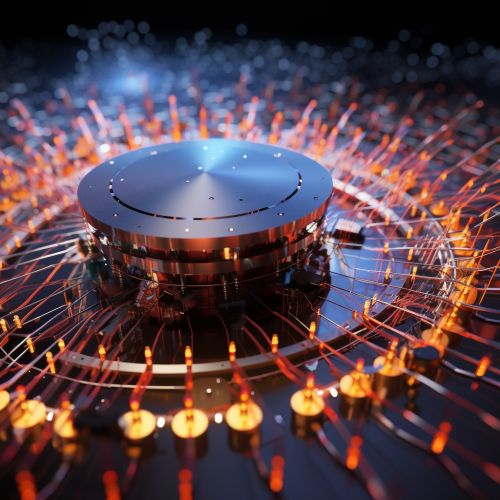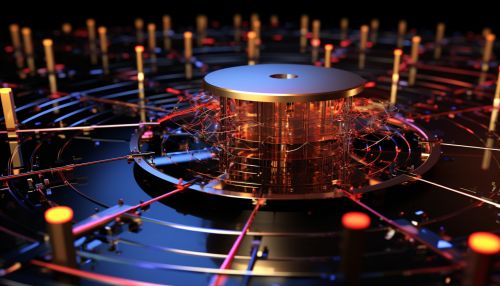Topological Quantum Codes
Introduction
Topological quantum codes, also known as topological quantum error correcting codes, form a class of quantum error correcting codes that protect quantum information stored in a quantum computer from errors due to decoherence and other quantum noise. These codes are designed to exploit the properties of a mathematical field known as topology to provide robust error correction capabilities.
Topology and Quantum Computing
Topology is a branch of mathematics that deals with the properties of space that are preserved under continuous transformations, such as stretching and bending. In the context of quantum computing, the field of topology is used to design quantum codes that can correct errors in quantum bits, or qubits, the fundamental units of quantum information.
Topological quantum codes are a key component of a theoretical model of quantum computation known as the topological quantum computer. This model of quantum computation is particularly robust against errors because it stores quantum information in a non-local manner across many qubits, making it difficult for errors to corrupt the information.


Quantum Error Correction
Quantum error correction is a set of techniques in quantum computing used to protect quantum information from errors due to decoherence and other quantum noise. Quantum error correction is crucial for the development of reliable and practical quantum computers, as quantum information is extremely sensitive to noise.
Topological quantum codes are a type of quantum error correcting code. They are designed to correct errors that occur in qubits by encoding the quantum information in a way that is resistant to errors. This is achieved by storing the quantum information non-locally across many qubits, so that an error in a single qubit does not corrupt the information.
Types of Topological Quantum Codes
There are several types of topological quantum codes, including the toric code, the surface code, and the color code. Each of these codes has different properties and capabilities, and they are used in different types of quantum computing architectures.
Toric Code
The toric code is a type of topological quantum code that is defined on a two-dimensional lattice with periodic boundary conditions. The toric code is notable for its simplicity and for being the first example of a topological quantum code.
Surface Code
The surface code, also known as the Kitaev code, is a type of topological quantum code that is defined on a two-dimensional lattice without periodic boundary conditions. The surface code is currently the most promising candidate for the implementation of error correction in a scalable quantum computer due to its high error threshold and relatively simple implementation.
Color Code
The color code is a type of topological quantum code that is defined on a three-dimensional lattice. The color code is notable for its ability to correct both bit flip and phase flip errors simultaneously, a property not shared by the toric and surface codes.
Applications of Topological Quantum Codes
Topological quantum codes have a wide range of applications in quantum computing, from error correction to quantum memory and quantum communication. They are a key component of the topological quantum computer, a theoretical model of quantum computation that is particularly robust against errors.
See Also
- Quantum error correction
- Quantum computing
- Quantum information
- Quantum entanglement
- Quantum cryptography
